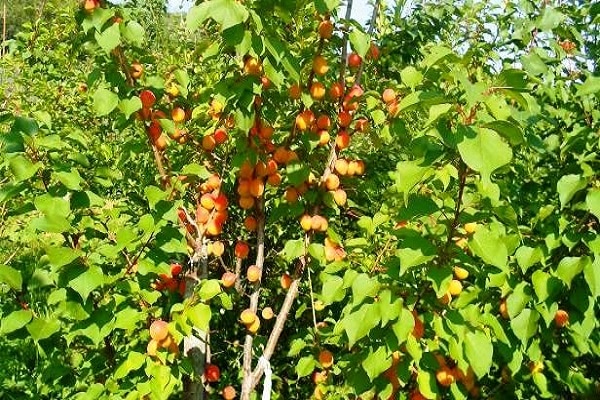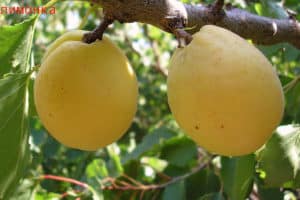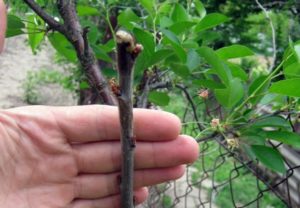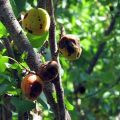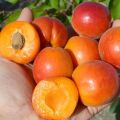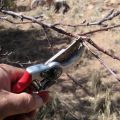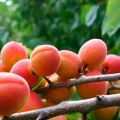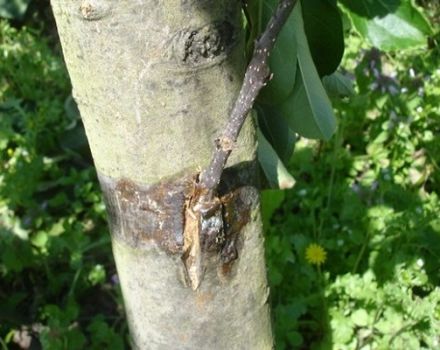Description of the Monastyrsky apricot variety, cultivation, planting and care
Cultures, which until recently grew only in the south, in recent years have begun to conquer the middle latitudes. Apricots are adored by both adults and kids. From sweet and juicy fruits, a very tasty jam is obtained, compotes and jams are harvested for the winter, fresh fruits are rich in vitamins, microelements, organic acids. Apricot varieties Monastyrsky are planted by summer residents, grown on an industrial basis by gardeners, the tree takes root well, after 3-4 years it pleases with the first ripened fruits.
History of origin
Many breeders have worked on breeding hybrids. In the nineties, the candidate of biological sciences Larisa Kramarenko, when crossing apricots Shablovsky and Bereznyakovsky, turned out a new crop variety that was suitable for growing in the middle lane, was resistant to gray rot, was not afraid of frost. Monastyrsky apricot was adapted to the difficult climate conditions of the Moscow region.
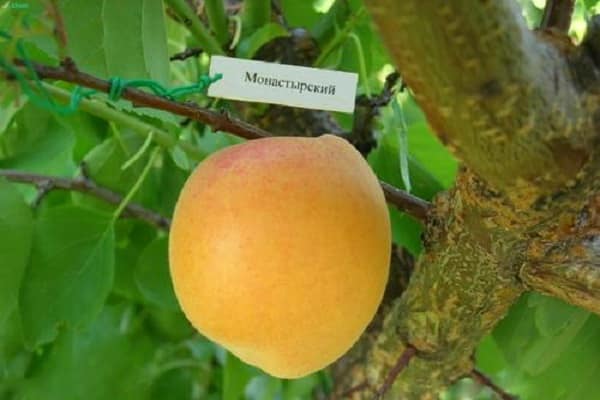
Description of the variety
A tall tree has a wide and beautiful crown, has spreading branches, and grows up to 5 meters in height. Oval large leaves have a rich shade. White flowers appear on undisturbed apricots, when even the grass is not yet green.
The Monastyrskiy variety is not particularly picky about the soil. Trees take root on loams, gray soils, and sandstones. The fruits ripen on them:
- oblong shape;
- with dense lemon skin;
- with a bright blush.
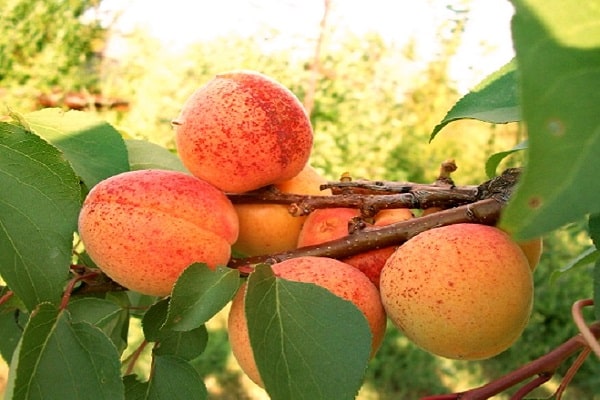
Apricots have a pleasant fruity aroma, sweet taste, and are valued for their chemical composition. The juicy pulp contains more than 8% sugar, contains potassium and organic acids.
The description of the variety indicated that it was adapted to the conditions of the Central Region. Apricots began to be planted by summer residents and gardeners in Ryazan, Belgorod, and Tula regions. Fruits ripen in early August, in cool weather ripen by the end of the month.
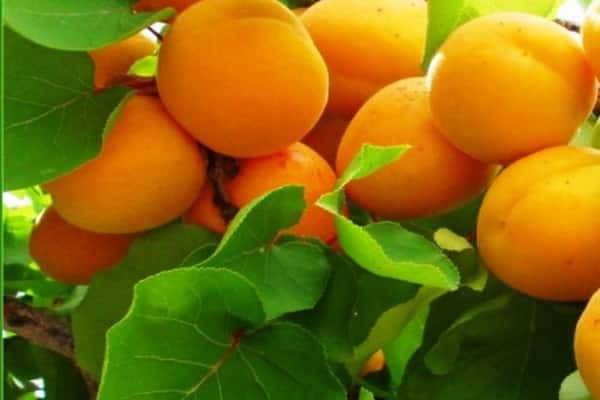
Growing features
Although the Monastyrsky variety is considered an unpretentious plant, so that the fruits weigh about 40 g, and the tree gives a stable harvest in mid-latitudes, it is necessary to comply with the requirements of agricultural technology and take care of the apricot.
Selection of seedlings
For a young tree, you need to go to a nursery or horticultural center, since you can buy wild game in the market, not varietal apricot. For a summer cottage, a sapling grafted onto a plum or teren is suitable. It is distinguished by a thick trunk, elongated growth. It is necessary to check the condition of the roots, they should not have cracks, dried or frozen parts. 2-year-old trees take root well.
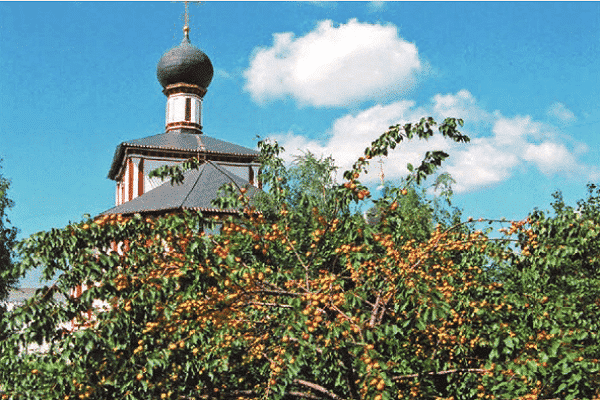
Dates and place
When to move an apricot to open soil depends on the region where it is going to be grown. In the south, the culture takes root better in autumn, since frosts come late. In the northern regions, it is advisable to plant the plant in April, before the buds have time to bloom. Novice gardeners should listen to the recommendations:
- A tree hole is dug to a depth of 80 cm and approximately the same distance in width. They do this in advance.
- Apricot feels better on loams, gray soils, sandy soils.
- The roots must be pruned, dipped in a chatterbox, get rid of dried branches.
Mullein and humus are introduced into the soil around the seedling, ash, superphosphate and potassium fertilizer are added, tamped and moistened. The tree is tied to a peg so that it will not be broken by the wind. The Monastyrsky variety is grown relatively recently, but summer residents have already fallen in love with the taste of fruits and aroma.
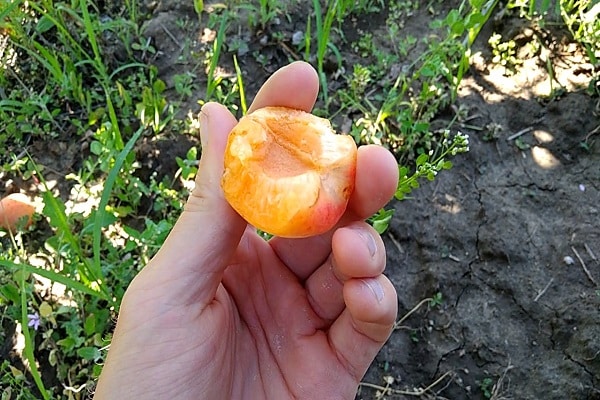
Tree care
In mid-latitudes, apricots are not found along roads and in plantings, as in the south, where they grow in the same way as maples or chestnuts. In order for a tree to please with a harvest of fruits in the Moscow region or in the Bryansk region, it is necessary to provide it with constant care, which includes moistening, loosening the earth, feeding and pruning.
Watering
How often to irrigate depends on the weather, the age of the apricot, the depth to which the soil is saturated. For the first time, 2 buckets of water are introduced after planting into the trunk circle to compact the soil. A young tree is watered every week, an adult - four times a season:
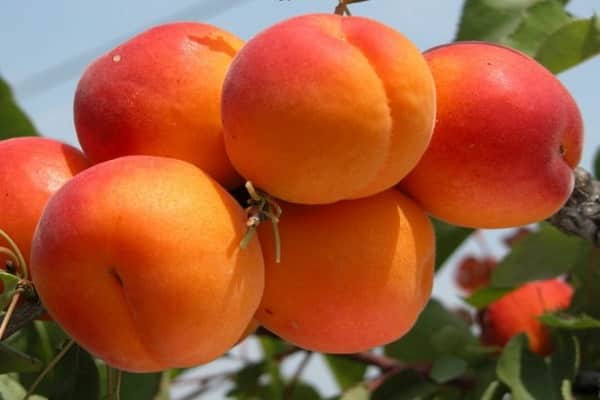
- with the growth of shoots;
- during the appearance of flowers;
- before fruit ripening;
- late autumn.
With an excess of moisture, the roots rot, with a shortage, the leaves wither, the branches dry out, the fruits become smaller. For watering apricot drip, furrow, or hole irrigation is best.
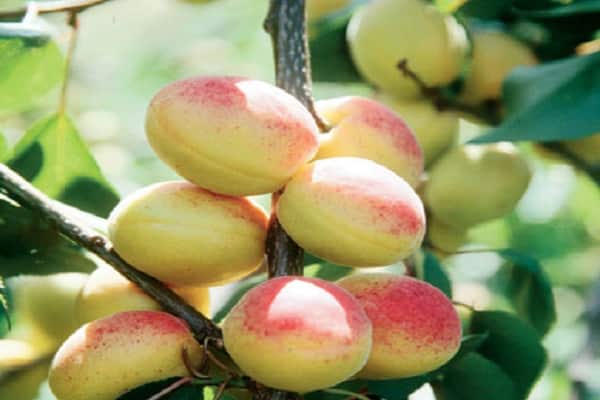
Crown formation
To protect the tree from pests and diseases, to get the maximum yield, you need to learn how to prune the shoots. The first time, 2/3 of the length is left from the branches.
In order for the sun to better penetrate inside, the apricot has a spreading crown, and the central trunk of a three-year-old seedling is equal. Every year, dried shoots are removed, branches that grow not up, but down.
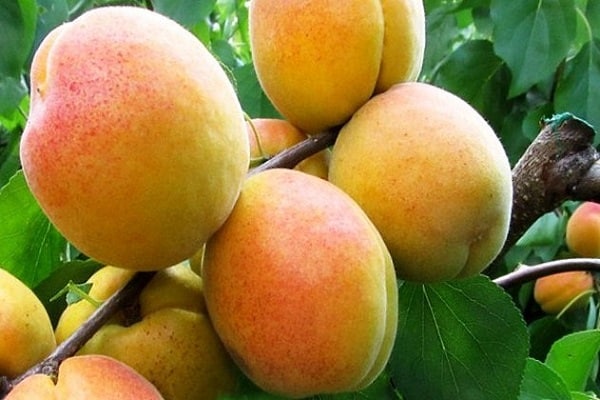
Reproduction
The apricot is taken from the seed, but the quality characteristics are unlikely to correspond to the crop variety, since pollination occurs in a vegetative way. The seeds must be hardened.
A ready-made seedling can be bought in a nursery, or stratified seeds can be placed in a pot to a depth of about 5 mm. Expanded clay or pebbles are poured at the bottom of the container, the seeds are covered with earth on top and, after watering, they are insulated with polyethylene. In the spring, the tree is transplanted into open ground.
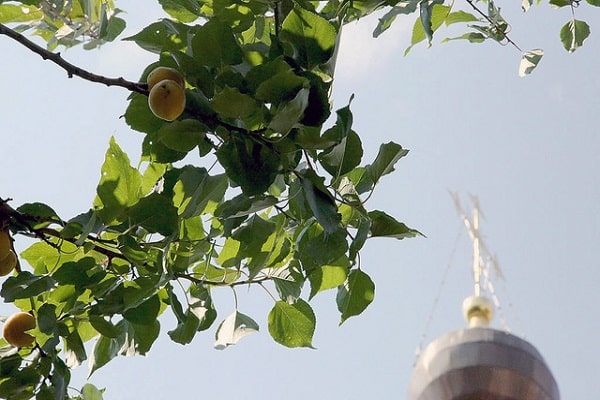
A culture is grown from cuttings, cutting off shoots 4 internodes long from a healthy culture. They are dipped in a growth stimulator for half a day, after which it is sent to the soil at the site.
The tree is propagated by scion. For this, shoots of healthy apricots that are planted in the same climate conditions are suitable. On the stem of the rootstock, which is kept in water, part of the bark is cut off and pressed against the plant being grafted.
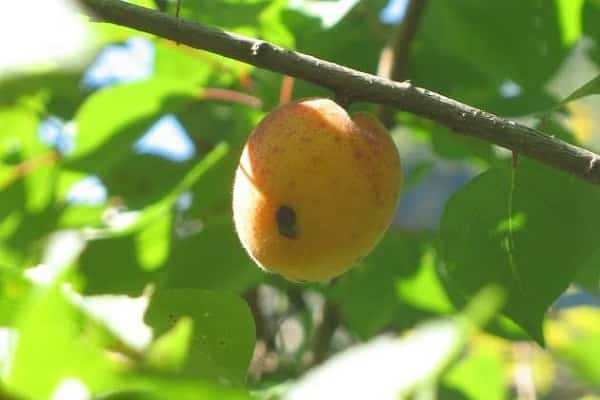
Diseases and pests
Monastyrsky, unlike other varieties of culture, rarely becomes infected with fungi that cause gray rot. However, this apricot is also susceptible to cytosporosis, in which flowers and leaves turn brown and dry out, and tubercles appear on the surface of the branches.
The tree is sick with perforated spotting, when the fruits suffer and crumble, and the problem begins with the formation of small spots.
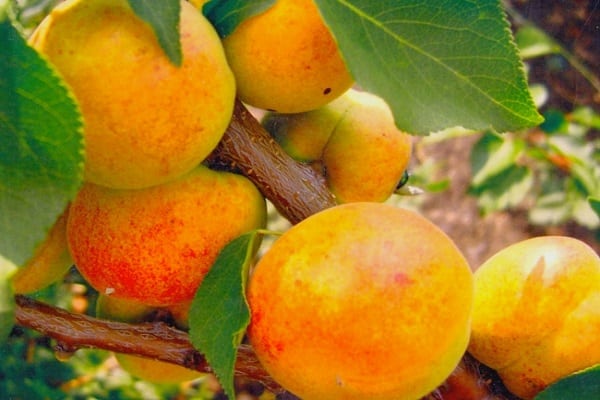
For prevention, dried parts of the plant are removed, the places of the cuts are covered with garden varnish. Sluggish leaves and blackened ovary are collected. In spring, apricots are sprayed with products containing copper. When diseases are affected, trees are treated with fungicides.
The culture suffers from the moth, whose caterpillars eat the ovary. The leafworm overwinters in the bark of plants, which feeds on the buds. Aphids drink the juice of the green parts of the tree. To destroy pests, both folk remedies and insecticides are used.
